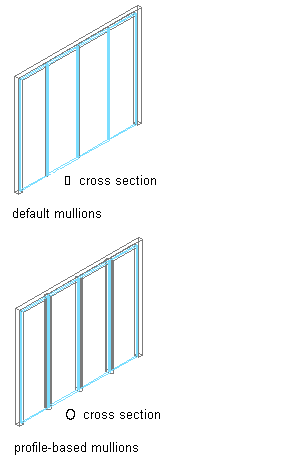All curtain wall grids, including the primary grid, can have mullion definitions. The mullion of the primary grid defines the outer edges of the curtain wall. You can define the mullions by specifying a width and depth or by selecting a profile from which the mullion is extruded.
Because curtain walls can contain multiple nested grids with different mullions, it is helpful to use a naming convention for grid mullions that indicates the level of each grid and the grid location or purpose within the curtain wall. For example, L3-FL1-Window Mullion can identify a mullion for a window in a third-level grid on Floor 1.

Specifying default and profile-based mullions
You create mullion definitions for a specific curtain wall style and those definitions can be assigned only to mullions in curtain walls of that style. You can create as many mullion definitions as you want, and then assign the definitions to mullions as needed. If you have nested grids, each grid has its own mullions. There is a default mullion definition that you can modify as needed that is used for any unassigned mullions.
Materials and Display Properties for Mullions
If you do not use materials to control the display properties of mullions, you can specify their display properties in the curtain wall style. The layer, color, linetype, and other display properties of the default mullion are applied to all mullions unless you create a custom display component for each definition. You can then control the display of each mullion definition independently.